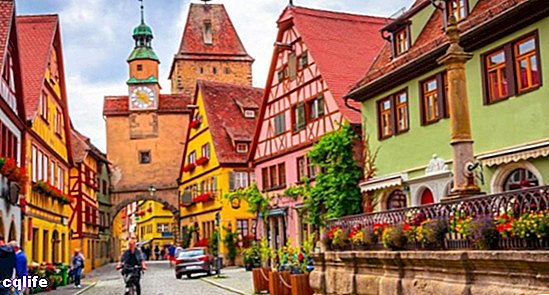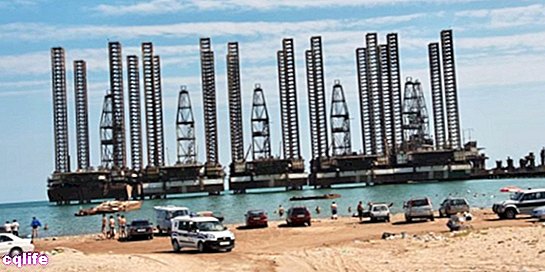We explain what a region is according to its geographical, cultural, economic or political meaning and examples of each one.

What is a region?
When we talk about a region, we can be referring to different things, depending on the context, but they all necessarily have to do with a portion of the land surface, whose constituent elements tend to be similar or homogeneous, thus allowing us to understand it as a unit.
Obviously, the limits of said region depend on which are said constituent elements, and that question depends on the specific perspective that we handle.
In this way, by the term region we usually distinguish some portion of territory, belonging to a country, a Condition or one community, whose geographic, population, economic or political characteristics are identifiable and comparable with those of some other territorial portion.
Obviously, this is a useful concept for geography, but also for the politics, the economy, the culture and numerous other fields of knowledge that require a geographical perspective.
Thus, regions in the territory of a country can be identified, but also when exploring the flow of a given language throughout a continent, when studying the extension of a Forest, a Mountain range or even when contemplating the historical evolution of an area of the planet. Any surface of the world can be considered a region: natural, cultural, economic, political, etc.
Natural or geographic region
The Siberian region is characterized by its great plains and its cold climate.We speak of a natural region (or its synonym in certain senses, geographic region) to refer to a sector of the earth's surface whose physical characteristics (relief, hydrography, weather, vegetation, etc.) are relatively uniform, thus allowing to distinguish a complete and homogeneous natural unit.
Obviously, they do not consider anything related to the humanity: neither cities, neither cultures, nor the history. Only with regard to nature. Examples of this are:
- The Amazon region. The extent of dense jungle South America that covers part of the territory of almost all the countries of the subcontinent.
- The Siberian region. Characterized by the huge frozen plains of northern Russia, with almost polar climates and sparse vegetation.
- The intertropical zone. Climatic zone that is between the two tropics of the planet (Cancer and Capricorn), and that houses the temperatures warmer and more humid, without there being defined seasons.
Cultural region

The Bavarian region is part of the German culture, but differs from it.
On the other hand, when speaking of cultural regions, allusion is made to the dominant cultural form in the population of a territory, that is, to its values religious, linguistic, ethnic or even its constitutive history, regardless of the physical or natural features of the territory it inhabits.
The whole of humanity can be classified into cultural regions, although this always with a certain margin of error. Its delimitation depends on how willing we are to generalize, since culture is a rather difficult aspect to define scientifically in separate categories. Examples of a cultural region are:
- The Caribbean region. Although its name comes from the Caribbean Sea, the portion of the ocean Atlantic that unites the Caribbean countries, actually when using this name we refer to a very particular set of American populations, the result of the colonization of the Americas on the part of Europeans, and whose culture is the fruit to varying degrees of the intense miscegenation that occurred in the region, mixing European whites, African blacks and indigenous settlers in a single great mestizo culture.
- The Balkan region. Also referred to as The Balkans, it is a group of countries of the Europe from the East, most of them located in the Balkan Peninsula (or around it) and endowed with a cultural and linguistic diversity that makes them a true cultural archipelago, full of tensions, exchanges and complex identity processes.
- The Bavarian region. As part of the German culture itself, Bavaria or the Bavarian region is located in the south of the country, bordering Austria, Lichtenstein and the Czech Republic. Festivals like Oktoberfest are manifestations of their local culture, different from the rest of the country in many ways.
Economic region

The economic regions or productive regions are, as in the previous cases, territorial areas in which there is a certain economic activity or in which a certain economic resource is abundant. Therefore, they constitute more or less homogeneous sectors within the productive map of a territory.
Thus, economic regions within a nation They are determined by the main economic activity that takes place in them: livestock regions, wine regions, industrial regions, etc. For example:
- Silicon Valley. This is the name given to a region of the State of California, in the United States, close to the San Francisco Bay, where most of the headquarters of the great Business from technology American: Google, Facebook, Apple, among many others.
- The North Caucasus economic region. One of the twelve economic regions of the Russian Federation and located in the descent of the northern part of the Caucasus mountain range, it is a true mine of hydrocarbons in form of Petroleum, coal and natural gas, and whose extraction the Russian State carries out in abundance.
- The Pampean economic region. Located in the heart of the Argentine territory, it encompasses the three most important provinces of the country: Córdoba, Santa Fe and Buenos Aires, whose lands are some of the most fertile in the country. Therefore, it is a region of important agricultural and livestock production.
Political region

The political regions, unlike the previous cases, are due to a rather conventional criterion, that is, arbitrary, that responds to the way in which nations organize and politically divide their territories.
All countries do this: they structure themselves as a set of small states, governed by methods central or federal, and whose limits are usually determined historically.
In this way, all countries have political regions, or political-administrative ones, since they are divisions of the central political administration. Some examples of this are:
- The 9 political-administrative regions of Venezuela. These are economic-administrative groupings of the States that make up the Venezuelan nation, designed to take advantage of local productive advantages, according to the similarities between the territories. In total, they are: the Andean region (Trujillo, Mérida, Táchira, Barinas states), the capital region (Miranda, Vargas and Capital District or Caracas states), the central region (Aragua, Carabobo and Cojedes states), the Guyanese region ( Amazonas, Bolívar and Delta Amacuro states), the insular region (Nueva Esparta states and federal dependencies), the llanos region (Guárico and Apure states), the northeastern region (Anzoátegui, Monagas and Sucre states), the central-western region ( Yaracuy, Portuguesa, Falcón and Lara states) and the Zulia region (Zulia state).
- The political regions of Europe. The European continent is divided into 50 sovereign entities: Albania, Germany, Andorra, Armenia, Austria, Azerbaijan, Belgium, Belarus, Bosnia and Herzegovina, Bulgaria, Cyprus, Croatia, Denmark, Slovakia, Slovenia, Spain, Estonia, Finland, France, Georgia, Greece, Hungary, Ireland, Iceland, Italy, Kazakhstan, Latvia, Liechtenstein, Lithuania, Luxembourg, North Macedonia, Malta, Moldova, Monaco, Montenegro, Norway, Netherlands, Poland, Portugal, United Kingdom, Czech Republic, Romania , Russia, San Marino, Serbia, Sweden, Switzerland, Turkey, Ukraine and the Vatican.
